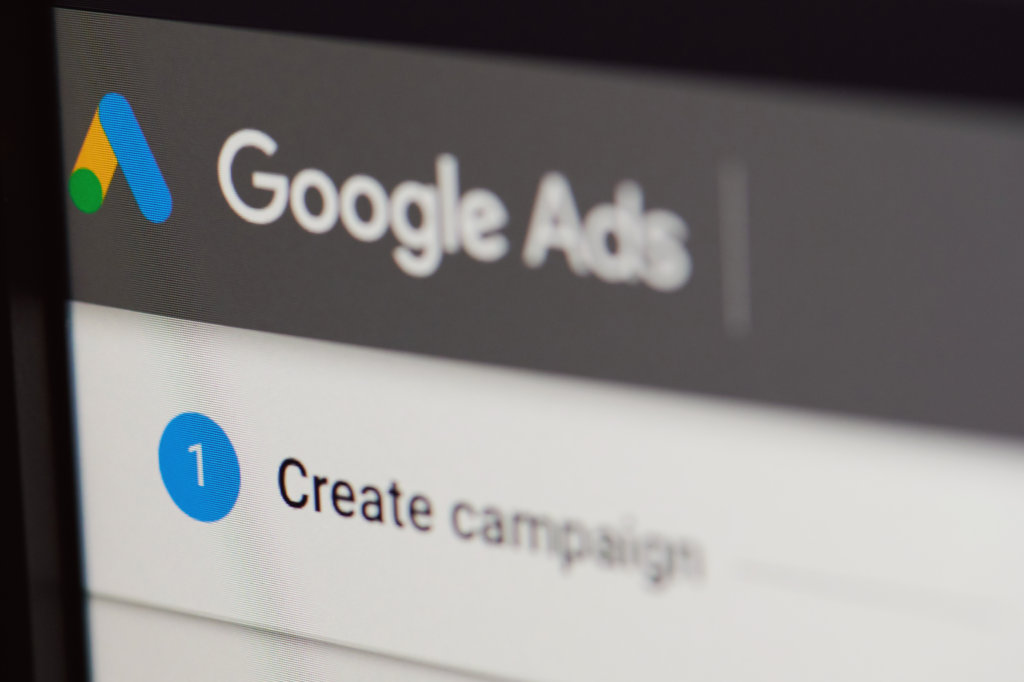Are you looking for a way to increase the click-through rate of your Google Ads campaigns? If so, then look no further.
This comprehensive guide will provide you with all the information you need to get started on increasing your clicks and improving your ROI.
Get ready to unlock the power of clicks!
This guide has covered everything from understanding how CTR works and why it matters to finding effective keywords and writing enticing ad copy. With this guide in hand, you can manage your click campaigns and maximize their effectiveness confidently.

The Importance of CTR in Google Ads Campaigns
Understanding CTR is the first step to mastering clicks and improving your Google Ads campaigns. The click-through rate (CTR) is a key performance indicator that measures the number of times an ad is clicked compared to how many times it’s been seen.
A high CTR means more people click on your ads, increasing your return on investment (ROI).
The CTR also helps you determine the effectiveness of your ad copy and targeting options.
Knowing the exact words and phrases that trigger an audience to click and which audiences are more likely to take action will help you adjust your campaigns for better performance.
Additionally, understanding what works and what doesn’t will enable you to create better campaigns in the future.
Also, knowing your CTR can help you identify when changes need to be made. If your ads have a low CTR, it could indicate that they are not being seen as often as they should or that the copy and targeting options are not resonating with potential customers.
Understand Your Audience
Understanding your audience is crucial for running successful Google Ads campaigns.
Audience research is gathering data about your target audience, such as their demographics, behavior, and preferences, and using that information to create campaigns that resonate with them.
Audience research allows you to create more targeted and personalized ads that speak directly to the needs and desires of your audience. By understanding their pain points, interests, and motivations, you can create ads more likely to catch their attention and persuade them to click.
Another important benefit of audience research is that it helps you avoid wasted ad spend by targeting the wrong people.
Identifying your ideal customer can ensure that your ads are only shown to those most likely interested in your offering. This increases your chances of getting clicks and helps you maximize your ROI by avoiding ad spending on irrelevant clicks.
Moreover, audience research enables you to uncover new opportunities and insights you may not have considered. By analyzing the data, you may discover new keywords or topics your audience is interested in, allowing you to create more targeted ads and increase your reach.
Tools and Methods for Discovering Your Target Audience
Discovering your target audience is the first step to creating a successful Google Ads campaign.
Fortunately, you can use several tools and methods to identify who they are and what they need.
For starters, you can utilize Google Analytics and AdWords’ built-in audience targeting features.
These tools provide detailed data about your website visitors and customers, allowing you to
understand better who they are and what they’re looking for.
You can also use survey tools such as Survey Monkey and Qualtrics to gather data from your existing customers. This is an effective way to learn more about their needs, interests, and behaviors.
In addition, social media platforms such as Facebook and Instagram offer powerful targeting options for narrowing your audience. You can also use Twitter’s advanced search feature to discover new trends and topics for your target audience.
Finally, focus groups are a great way to understand the needs of your target customers. Focus groups allow you to engage with people from your target audience and get feedback on topics important to them.
Using the right tools and methods, you can gather data about your target audience to help you create more effective Google Ads campaigns. This will ensure that your ads are seen by the right people, increasing click-through rates and maximizing ROI.
How to Develop a Customer Persona
The data gathered from your audience research can be used to create a customer persona. A customer persona is a profile of your ideal customer based on their characteristics, interests, and behaviors.
Having a clear understanding of who your target customers help you develop more focused campaigns that speak directly to their needs. Your ads should reflect the language and concerns of your target audience to create a connection with them.
Creating a customer persona doesn’t need to be complicated or time-consuming. You can start by listing the demographic information such as age, gender, location, job title, and income level of your ideal customer.
Once you have their basic info, you can add more details, such as their interests, values, and lifestyle. This will better understand who they are and what they care about.
Finally, consider their goals and challenges. How can your product or service help them achieve their goals? What problems do they face that your offering could solve?
Understanding the answers to these questions, you will be better equipped to create campaigns that speak directly to your target audience’s needs and pain points.
Craft Compelling Ad Copy
Now that you know your target audience and what they need, it’s time to create compelling ad copy. Your ads should be tailored to the needs of your customer persona.
For example, if you target a younger demographic, consider using slang or more casual language in your ads to better connect with them. If your customer persona is older, use more formal language to ensure your message is professional and trustworthy.
When creating ad copy, it’s important to remember the three Cs: be Clear, Concise, and Compelling.
Keep your ads short and sweet so your reader doesn’t get bored or overwhelmed by too much text. Use action words to call attention to your offer, and include relevant keywords that will help your ad stand out in search engines. Additionally, use eye-catching visuals to draw interest and emphasize your points.
Finally, add a sense of urgency or scarcity to your ads. Give readers a reason to act now, such as limited-time specials or exclusive offers. You can also use social proof by including real customer stories and testimonials that showcase the benefits of your product or service.
Tips on How to Create Attention-Grabbing Headlines and Descriptions
Headlines and descriptions influence whether or not someone clicks on your ad. Here are some tips to keep in mind when creating attention-grabbing headlines:
-Include numbers and qualifiers. Include statistics or facts to show readers why they should trust your product or service.
–Keep headlines concise and intriguing. Use catchy phrases to grab attention and get people interested in what you have to say.
-Use keywords that relate to your target market’s needs. This will help you appear higher in search engine results.
When crafting descriptions, keep the following tips in mind:
-Start with a hook. Use an interesting or attention-grabbing phrase to draw users into your ad.
-Highlight key features and benefits. Let readers know what they can gain from using your product or service.
-Focus on benefits, not features. Show readers how your product or service will make their lives better.
-Use customer testimonials and stories. Include real-life success stories to build trust and credibility with potential customers.
Optimize Your Keywords
Keyword research helps determine what words people use when searching for your product or service.
You can start by listing words related to your business and industry. Then, use tools like Google AdWords to see which keywords have the highest search volume and competition level.
Finally, include these keywords in your website content and ads so that more people can find you online.
The Importance of Relevance and Specificity in Selecting Keywords
When researching and selecting keywords for your website, it’s important to focus on relevance and specificity. Relevance refers to how closely the keywords match your product or service.
Specificity refers to your keywords regarding category, brand, or product type. For example, a search for “shoes” is much less specific than a search for “red Converse sneakers.”
Use relevant and specific keywords for your business to achieve the best results. This will help you attract more qualified leads actively searching for what you have to offer.
Additionally, using highly-targeted and specific keywords can reduce the cost of your pay-per-click campaigns and other advertising. This will help maximize the return on investment for your marketing efforts.
Finally, make sure to monitor and adjust your keyword selection as needed. This way, you can stay up-to-date with changes in search behavior and ensure your website is visible to potential customers.
Keyword Optimization Strategies
When optimizing your keywords, focus on short-tail and long-tail keywords. Short-tail keywords are general terms with high search volume and competition. Long-tail keywords are more specific phrases with much lower search volume and competition.
You should include both keywords in your website content to target different types of searches. For example, you could use a short-tail keyword like “shoes” and a long-tail keyword like “women blue running shoes size 8.”
You should also consider localizing your keywords if you serve a specific geographical area or region. This will help you target local customers and increase your visibility within the area.
Finally, use synonyms and related terms in your keyword optimization to capture a wider range of searches. For instance, if you are targeting “shoes” as a keyword, also include variations like “footwear” or “sneakers.”
Optimizing your keywords can increase visibility and attract more qualified leads for your business. Doing so will help drive more traffic to your website and ultimately result in higher sales and conversions.
Structure Your Campaigns for Success
Creating successful campaigns requires careful planning and strategy.
Each part of the campaign should be designed to achieve a specific goal, such as driving brand awareness, increasing leads, or growing sales.
When structuring your campaigns, focus on creating content that resonates with your target audience and aligns with their interests.
Consider the type of content that best suits your goals – for instance, visuals like infographics, videos, or podcasts may be more engaging than plain text. Additionally, plan out a schedule for implementing each aspect of the campaign to ensure smooth execution.
As you build your campaigns, consider using analytics to measure progress and performance.
This will help you determine which elements are working well and which areas need improvement. With this data, you can make adjustments to increase engagement and effectively reach desired outcomes.
By properly structuring your campaigns thoughtfully and utilizing data-driven insights, you can optimize your efforts and maximize return on investment (ROI).
Tips on How to Organize Your Campaigns, Ad Groups, and Keywords
Comprehensive campaigns should be composed of various elements that come together to generate results.
Start by organizing your ad groups and keywords into relevant topics or themes. This will help you create more targeted ads and optimize your budget for maximum efficiency.
Next, group each ad group into larger campaign-level topics. This will allow you to monitor performance and adjust your budget in a more organized way.
You can also label different keywords and ad groups according to industry, purpose, or location. This will help you quickly make changes and track progress across multiple campaigns.
Finally, take advantage of automated tools like AdWords Scripts to further optimize your campaigns. These scripts can analyze and modify various aspects of a campaign, such as bids, budgets, and targeting options. This will ensure that your campaigns are always running efficiently and effectively.
Monitor Your Performance and Make Adjustments
The key to running successful campaigns is staying on top of performance.
You should regularly review your analytics and identify areas for improvement. This will help you adjust your strategy and optimize campaigns according to current market conditions and trends.
It’s also important to stay up-to-date with the latest industry developments to leverage the most effective tactics for your campaigns.
Finally, don’t forget to experiment and try new things. There is no one-size-fits-all approach to running successful marketing campaigns. Keep trying different tactics and strategies until you find the right combination for your business.
Final Thoughts
Creating successful Google Ads campaigns is an ongoing process. It requires careful planning, execution, and optimization to achieve desired outcomes.
By following these best practices for keyword optimization, structuring campaigns, organizing ad groups and keywords, monitoring performance, and making adjustments, you can ensure your campaigns are always running at their peak efficiency. This will help you maximize your ROI while reducing wasted spend.
Remaining up to date with the latest changes and advancements in Google Ads can also be beneficial. This ensures that you continuously advance your campaigns and leverage new technologies for improved performance.
Finally, it is important to track the success of your campaigns by monitoring the performance metrics that are most important to you. This will allow you to make informed decisions on optimizing your campaigns to achieve the highest returns possible.
About The Author
Rehj
With over 15 years of experience in copywriting, Rehj has established a reputation as a highly skilled and talented wordsmith. Rehj has honed their craft throughout her career, consistently producing top-quality content for various audiences and industries.
Her ability to understand their target audience, craft compelling narratives, and write in a style that resonates with their audience has made them a sought-after copywriter in their field. Rehj’s passion for writing and commitment to producing top-notch content has driven their success and established them as a trusted voice in copywriting.





